Abstract
The in vitro activity of cefoxitin, 3-carbamolyloxymethyl-7-α-methoxy-7[2-(2-thienyl)acetamido]-3-cephem-4-carboyxlic acid, was investigated. Activity against gram-positive organisms was less than that of cephalothin and cephloridine. It was highly active against gram-negative bacilli, with activity against Escherichia coli, Proteus mirabilis, and Klebsiella pneumoniae equal to that of currently available cephalosporins. In addition, it was active against certain Enterobacter strains, Serratia marcescens, indole-positive Proteae and Herellea. The strains of these latter bacteria were strains susceptible to carbenicillin and ticarcillin. Pseudomonas aeruginosa and other Pseudomonas species were resistant. Changes in pH, inoculum size, and type of growth medium had no significant effect on the activity of the antibiotic. Cefoxitin was highly resistant to hydrolysis by various types of gram-negative beta-lactamases. The precise role of resistance to beta-lactamase hydrolysis varied from strain to strain. Bacterial resistance to cefoxitin was not necessarily related to hydrolysis of the antibiotic. However, the resistance of cefoxitin to hydrolysis did contribute to its activity. Cefoxitin could function as an inducer of beta-lactamase activity and effectively bound to purified beta-lactamases.
Full text
PDF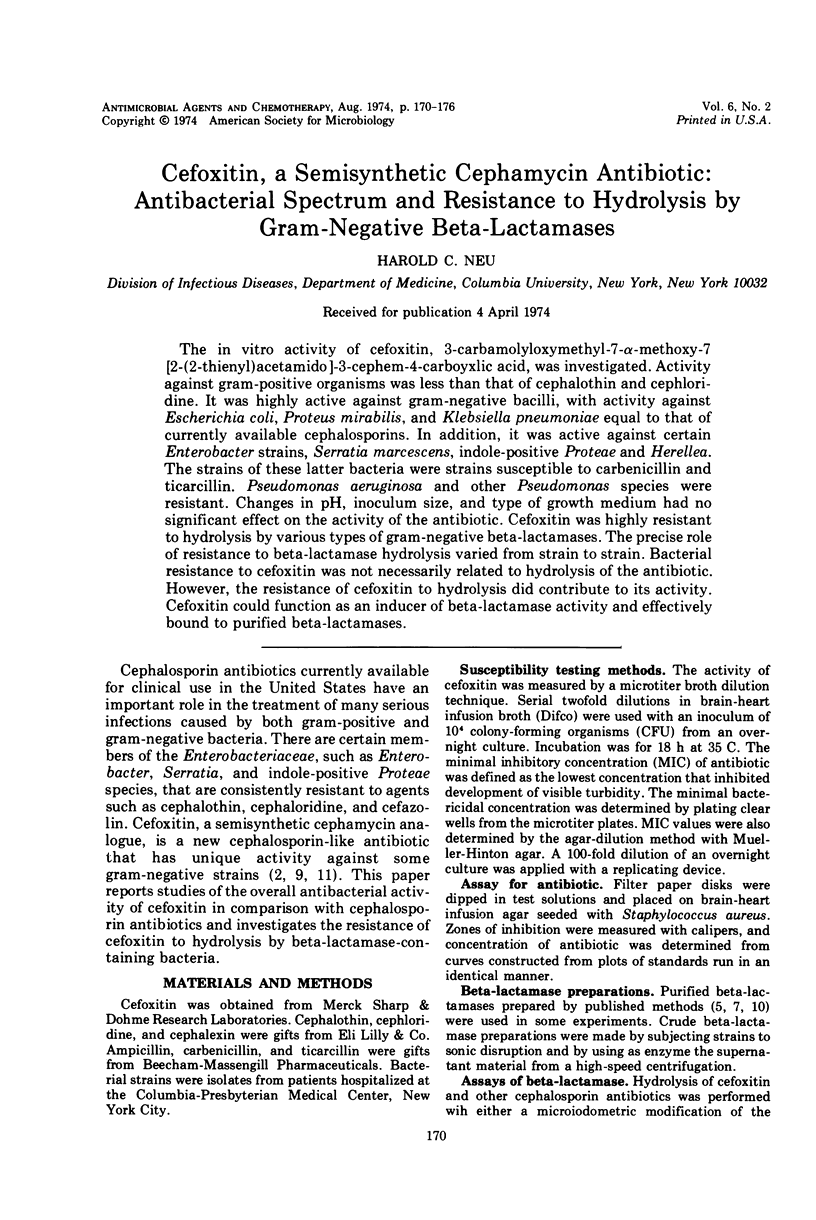
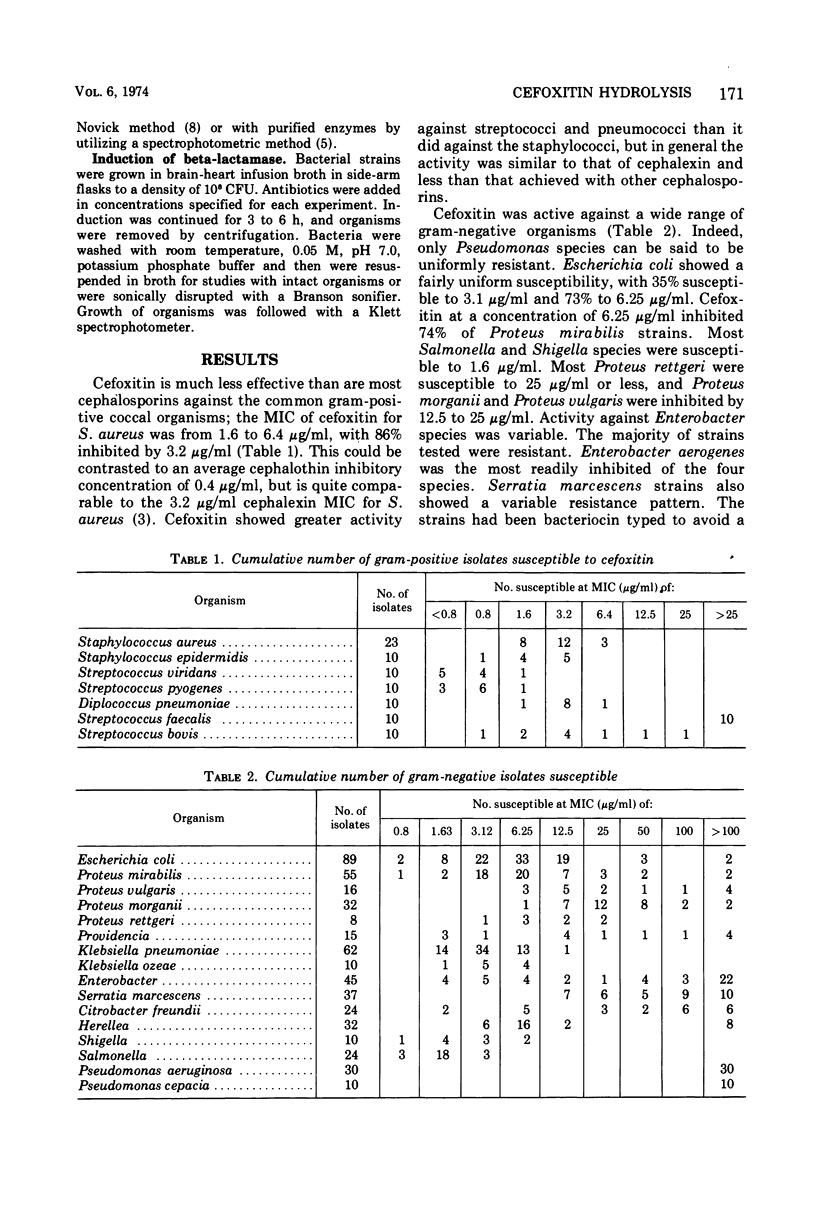
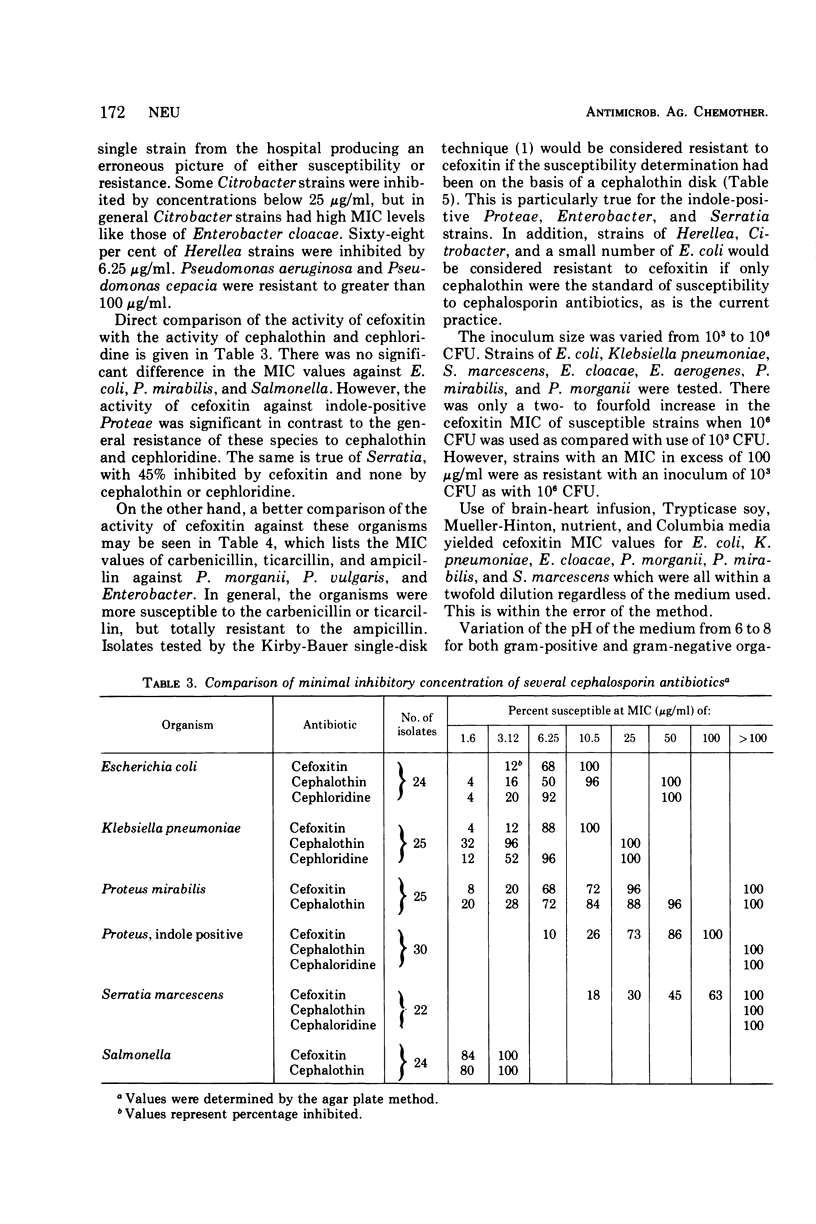
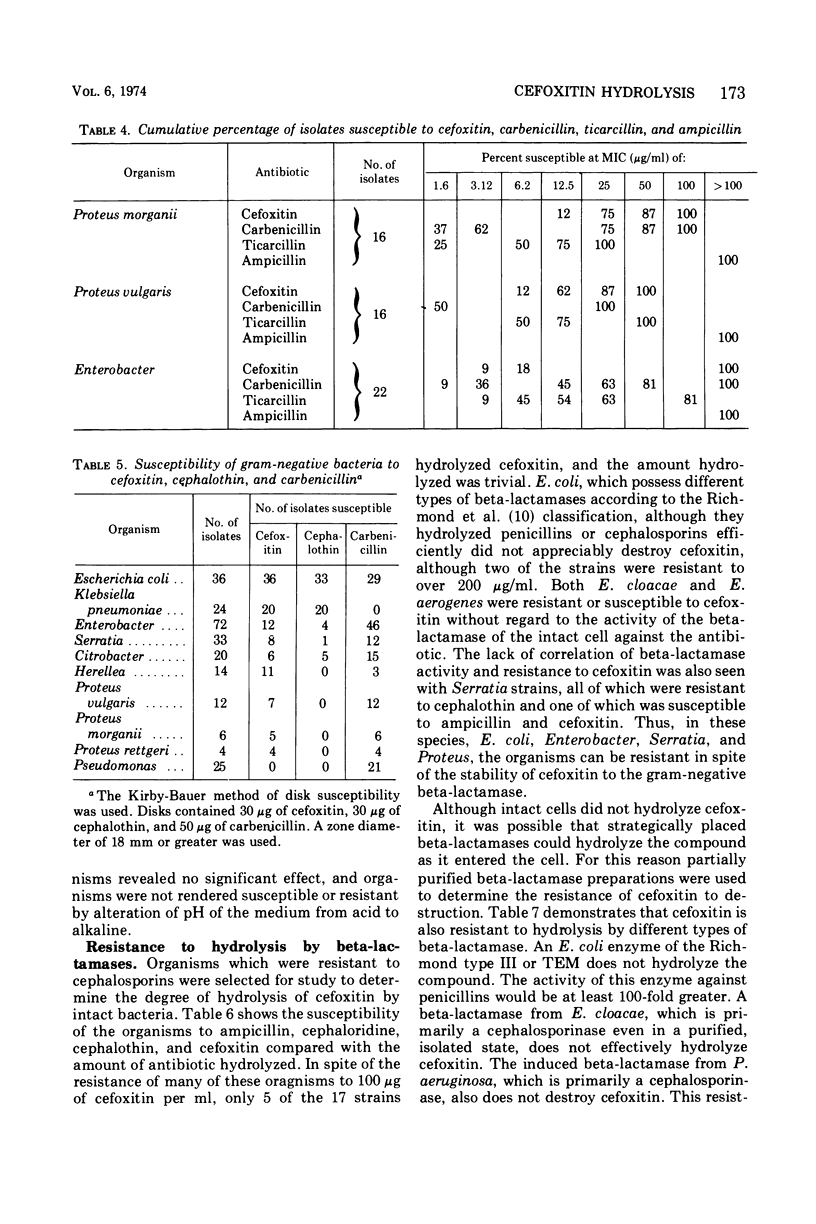

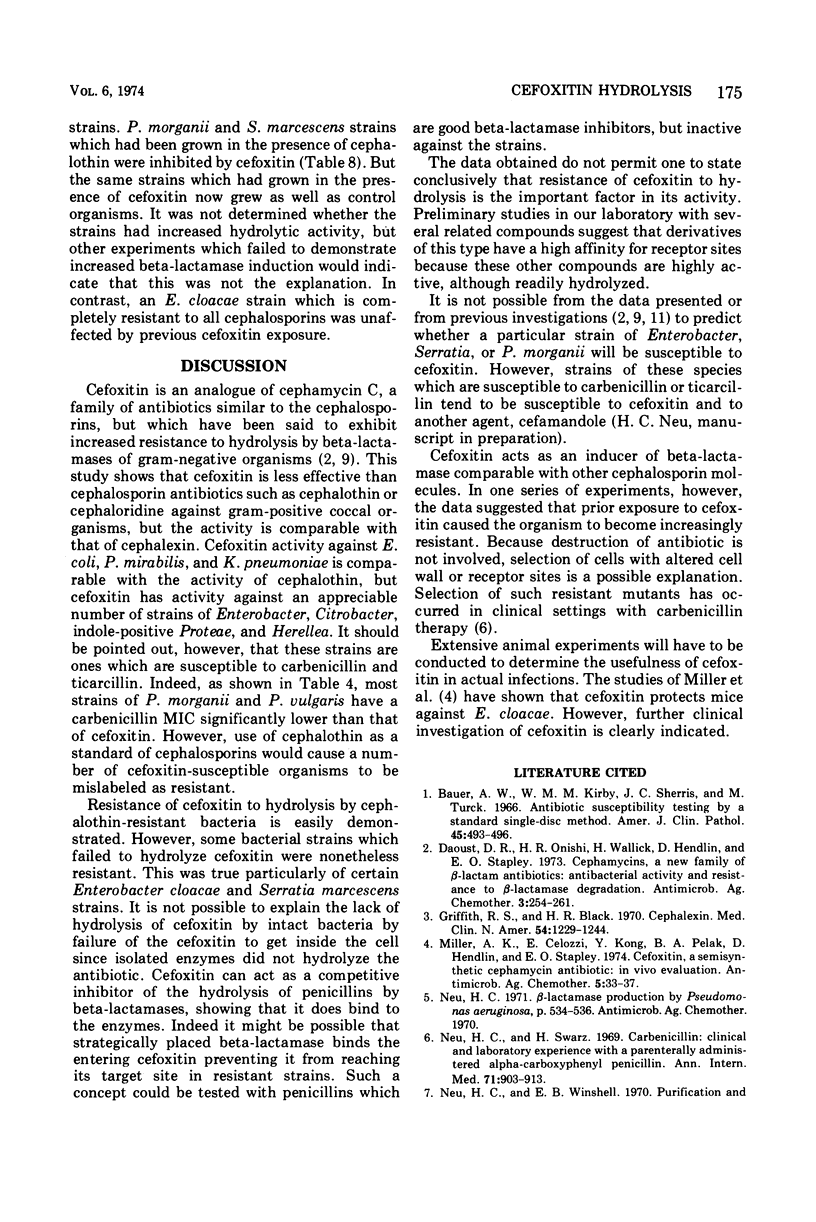
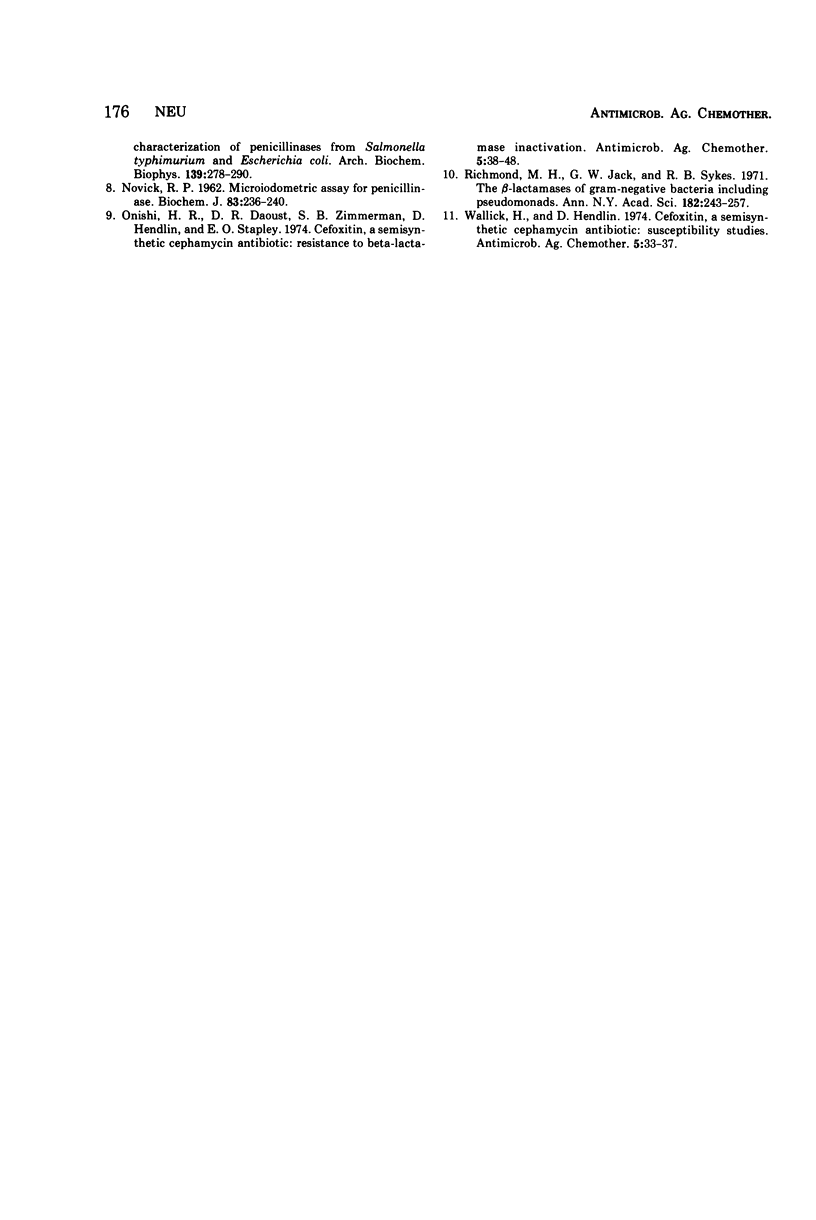
Selected References
These references are in PubMed. This may not be the complete list of references from this article.
- Bauer A. W., Kirby W. M., Sherris J. C., Turck M. Antibiotic susceptibility testing by a standardized single disk method. Am J Clin Pathol. 1966 Apr;45(4):493–496. [PubMed] [Google Scholar]
- Daoust D. R., Onishi H. R., Wallick H., Hendlin D., Stapley E. O. Cephamycins, a new family of beta-lactam antibiotics: antibacterial activity and resistance to beta-lactamase degradation. Antimicrob Agents Chemother. 1973 Feb;3(2):254–261. doi: 10.1128/aac.3.2.254. [DOI] [PMC free article] [PubMed] [Google Scholar]
- Griffith R. S., Black H. R. Cephalexin. Med Clin North Am. 1970 Sep;54(5):1229–1244. [PubMed] [Google Scholar]
- Miller A. K., Celozzi E., Kong Y., Pelak B. A., Hendlin D., Stapley E. O. Cefoxitin, a semisynthetic cephamycin antibiotic: in vivo evaluation. Antimicrob Agents Chemother. 1974 Jan;5(1):33–37. doi: 10.1128/aac.5.1.33. [DOI] [PMC free article] [PubMed] [Google Scholar]
- Miller A. K., Celozzi E., Kong Y., Pelak B. A., Hendlin D., Stapley E. O. Cefoxitin, a semisynthetic cephamycin antibiotic: in vivo evaluation. Antimicrob Agents Chemother. 1974 Jan;5(1):33–37. doi: 10.1128/aac.5.1.33. [DOI] [PMC free article] [PubMed] [Google Scholar]
- NOVICK R. P. Micro-iodometric assay for penicillinase. Biochem J. 1962 May;83:236–240. doi: 10.1042/bj0830236. [DOI] [PMC free article] [PubMed] [Google Scholar]
- Neu H. C., Swarz H. Carbenicillin: clinical and laboratory experience with a parenterally administered penicillin for treatment of Pseudomonas infections. Ann Intern Med. 1969 Nov;71(5):903–911. doi: 10.7326/0003-4819-71-5-903. [DOI] [PubMed] [Google Scholar]
- Neu H. C., Winshell E. B. Purification and characterization of penicillinases from Salmonella typhimurium and Escherichia coli. Arch Biochem Biophys. 1970 Aug;139(2):278–290. doi: 10.1016/0003-9861(70)90479-0. [DOI] [PubMed] [Google Scholar]
- Onishi H. R., Daoust D. R., Zimmerman S. B., Hendlin D., Stapley E. O. Cefoxitin, a semisynthetic cephamycin antibiotic: resistance to beta-lactamase inactivation. Antimicrob Agents Chemother. 1974 Jan;5(1):38–48. doi: 10.1128/aac.5.1.38. [DOI] [PMC free article] [PubMed] [Google Scholar]
- Richmond M. H., Jack G. W., Sykes R. B. Mechanisms of drug resistance. The beta-lactamases of gram-negative bacteria including pseudomonads. Ann N Y Acad Sci. 1971 Jun 11;182:243–257. doi: 10.1111/j.1749-6632.1971.tb30661.x. [DOI] [PubMed] [Google Scholar]


